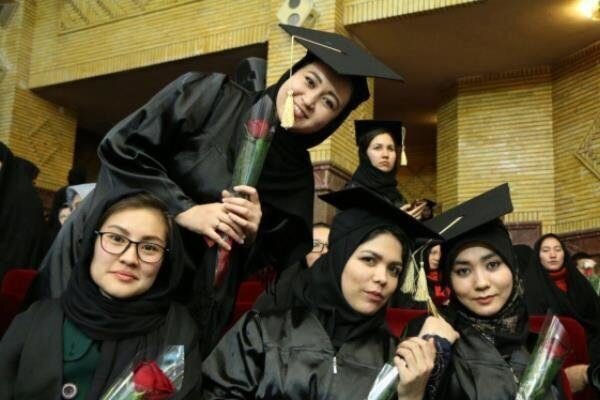Over 40,000 Afghans studying in Iranian universities

TEHRAN - More than 40,000 Afghan students are currently studying in Iranian universities, Vahid Haddadi-Asl, the Iranian deputy science minister for international affairs, has said.
There are no limitations for admitting Afghan students in Iran, ISNA quoted Haddadi-Asl as saying.
Every foreign student who enters the country must have a passport or an official identity card, he said, adding that the Ministry of Science has announced that if these documents approved by the Ministry of Interior and the Ministry of Foreign Affairs are not available for foreign students, it is not possible for them to study.
Many Afghan students are interested to continue online studying in Iran, he noted.
In December 2022, MP Mehdi Esmaeili said in the wake of the Taliban's move to suspend education for girls, Iran is ready to host Afghan girl university students.
In line with philanthropic values, if the Afghan government does not reconsider its decision, the Islamic Republic of Iran will accept Afghan female students, ISNA quoted Esmaeili as saying.
Iran has spent more than $352 million in the current school year that started on September 23 on the education of Afghan students.
Over 670,000 students of Afghan nationality are studying in Iran, and the cost of educating these students is more than $352 million, IRNA reported.
In the current school year, $17 million of international aid and $335.631 million dollars from internal sources have been spent on the education of Afghan nationals.
However, international organizations have paid less than 3.9 percent of the cost of education for Afghan students in Iran in the last two years.
Leader of the Islamic Revolution Ayatollah Seyyed Ali Khamenei issued a decree in May 2015 that allows all foreign nationals, even those who have no identification and are living in Iran illegally, to attend schools in the country.
Relying on moral and Islamic principles, the government of the Islamic Republic of Iran has created equal conditions in benefiting from educational opportunities for Afghan students.
In the previous school year, some 556,000 Afghan students studied in Iranian schools.
Afghan students are currently studying in 6,000 schools across Iran, of which 88 schools are being built with the participation of international organizations.
The Ministry of Interior has announced to the Ministry of Education a list of 200,000 Afghan children who have the conditions to study in Iranian schools, Ali Hamedi, an official with the Education Ministry, said in November 2022.
The Ministry of Education has the capacity and potential to provide them with educational conditions and facilities equal to other Iranian students, he added.
The literacy rate among refugees has increased significantly in recent decades. So that the literacy rate of Afghan immigrants in Iran is higher than the number of literate people in Afghanistan, according to a report published in June 2022 by the research center of the Iranian Parliament (Majlis).
Iran is home to over 800,000 registered refugees and some 2.6 million undocumented Afghans. Today, more than 500,000 Afghan children- including undocumented Afghans and those who have newly arrived in Iran following the Taliban-takeover-are benefitting from Iran’s inclusive education policies, one of the most progressive in the world.
Many of the refugees living in Iran are second and third-generation, according to the UNHCR.
Iran is among the 15 successful countries in attracting international university students, according to Mohammad Javad Salmanpour, the deputy head of the Organization for Student Affairs.
Iran has the ability and capacity to have more than 250,000 foreign students by 2026, he stated.
These students are studying in different fields of science, research and technology, health and medical education, and also in the fields of humanities, Islamic sciences, Persian language, and literature, law, fundamentals of Islamic law, management fields, economics, psychology, social sciences, as well as engineering, agricultural sciences, animal sciences, and basic sciences.
MG
Leave a Comment